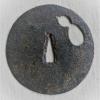-
Posts
6,461 -
Joined
-
Last visited
-
Days Won
23

ROKUJURO replied to Grey Doffin's topic in Sword Shows, Events, Community News and Legislation Issues

ROKUJURO replied to TheGalos's topic in Translation Assistance

ROKUJURO replied to Catalin's topic in General Nihonto Related Discussion

ROKUJURO replied to singh13's topic in Swords and Edged Weapons

ROKUJURO replied to obiwanknabbe's topic in General Nihonto Related Discussion

ROKUJURO replied to obiwanknabbe's topic in General Nihonto Related Discussion

ROKUJURO replied to obiwanknabbe's topic in General Nihonto Related Discussion

ROKUJURO replied to obiwanknabbe's topic in General Nihonto Related Discussion

